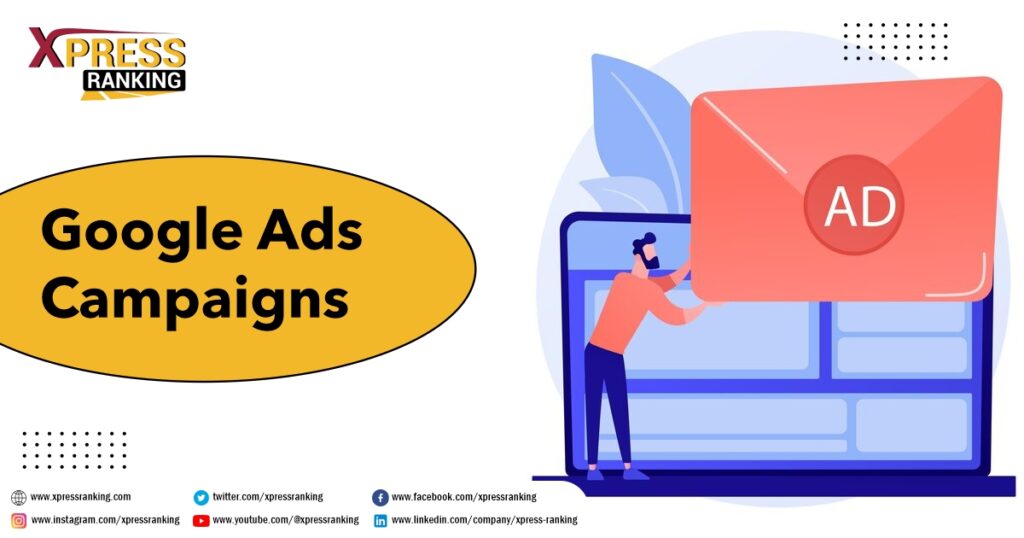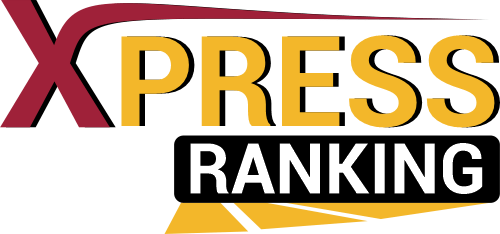In today’s market, where huge competition is the first barrier for marketers and businesses, attracting and retaining customers becomes a significant challenge. Success largely depends on achieving impressive brand recognition among your target audience and bridging the gap between their needs and the solutions you provide.
At the same time, many savvy marketers are well-versed in the intricacies of paid marketing (PPC) and know all the tips and tricks to capture the market share that others might struggle to secure. This is where Google Ads Campaigns steps in to scale your brand recognition, generate more leads, and boost sales.
So, what’s the strategy?
The strategy involves using Google Ads to engage customers. By doing so, you can effectively capture their attention and get them thinking about your brand.
Here comes the fact: Did you know that paid marketing campaigns can drive 65% of clicks from Google Ads, and following a suitable and strategic approach can double your business’s growth through this popular platform?
Hope this makes sense to you moving forward! The blog provides valuable tips on running Google Ads Campaigns that produce suitable results for your business. Let’s dive into this blog and learn how to do Google Ads.
Keep on reading!
Understanding the Role of Google Ads
Google Ads is a powerful, renowned tool for online advertising that lets you create targeted ads for specific audience segments. To run successful PPC campaigns, you need a clear strategy and a few significant elements in place.
The process starts with Setting up an ad, running an ad, and executing an ad. Start by putting the bid on specific keywords or phrases with a view to making your ad reach the targeted audience or be interested.
With all the above, you can manage everything from managing your campaigns to creating Google Ads campaigns to tracking your results.
Perks of Running Google Ads for Your Business
Did you know there are more than 2.1 billion unique online shoppers who are looking to thrive in today’s market? However, with PPC campaigns, a solid online presence helps your business stand out.
Increased Visibility
In today’s digital age, having an impressive and solid online presence boosts your visibility, making it easier for potential customers to locate you. At the same time, optimizing your website and increasing engagement on social media can help your brand do well in search results and capture the attention of a wider audience.
Build Trust
An impressive and optimized online presence is paramount for building credibility among your audience and convincing them of your authenticity. Examples are user-friendly websites, active social media profiles, and positive customer reviews that show your business is reliable and legitimate. Based on this trust, customers find your business professional and like to connect for long-term relationships.
Improved Customer Service
Effective online channels offer instant support and communication, enhancing your customer service. Live chat, responsive social media interactions, and accessible contact information ensure your customers’ questions and concerns are addressed promptly, improving their experience and satisfaction with your brand.
Scale Brand Awareness
A robust online presence amplifies your brand’s reach and recognition. Branding across your website, social media, and digital ads keeps your business top-of-mind for consumers. Engaging content and targeted campaigns help improve your brand as a leader in your industry, driving awareness and loyalty.
Cost-Effective Advertising
Digital advertising provides a budget-friendly way to reach your target audience. With options like social media ads and pay-per-click campaigns, you can efficiently manage your advertising spend and measure performance. This cost-effectiveness ensures you get the most value for your PPC marketing investment and reach potential customers effectively.

Top Reasons to Use Google Ads
Google Ads holds essential and valuable perks for all businesses, from startups to seasoned professionals with diverse budgets, advertising goals, and target audiences.
Here are services with comprehensive perks for Digital Marketers:
Maximum Reach
Google Ads offers immense reach by connecting you with potential audiences who are actively searching for better solutions. By advertising on Google, you increase the likelihood of appearing in search results, driving clicks and boosting conversions.
Easy to Use
Google Ads simplifies the advertising process with an intuitive interface. It’s designed to be user-friendly, making it easy for anyone to create and manage ads without needing advanced technical skills.
Scale Brand Awareness
Google Ads helps reinforce your brand name and visibility. Regular exposure through ads increases brand recognition and builds trust with consumers, making your business a familiar name in their minds.
Efficient Account Management
Google Ads streamlines managing multiple client accounts. You can handle all your advertising needs from a single platform, saving time and making it easier to track and optimize ad campaigns effectively.
Budget Control
Google Ads allows you to set daily budget limits, ensuring you don’t overspend. You control how much you want to invest and only pay when someone interacts with your ad, maximizing your advertising spend.
Understanding the Bidding Option for Google Ads
The three main bidding options are:
Cost-per-click (CPC): Advertisers pay each time a user clicks their ad, measuring direct engagement and driving targeted traffic to websites.
Cost-per-mille (CPM): Advertisers pay per thousand impressions of their ad, focusing on brand visibility and reaching a broader audience.
Cost-per-engagement (CPE): Advertisers pay when users actively engage with an ad, such as by hitting likes and shares or commenting, ensuring meaningful interactions.
How to Run Google Ads Campaigns?
Step 1: Learn the Basics
Before proceeding with online advertising, it’s essential to understand the fundamentals of Google Ads Campaigns. You need to be familiar with key concepts such as CPC (Cost Per Click), CPM (cost per mile), and CTR (Click-Through Rate). You also need a clear understanding of the basic principles of targeting, bidding, and ad creation.
This knowledge will provide you with a strong foundation, helping you make informed decisions and set realistic goals for your advertising campaigns. Moreover, you can experience our strategic and result-driven digital marketing services to gain expertise in running successful campaigns.
Step 2: Starting with Google Ads Campaigns
To set up PPC campaigns, go to ads.google.com and click “Get started.” After setting up your ads account, Google will guide you in creating a Smart campaign immediately. While this is tempting for those who want a quick setup, investing time in creating customized campaigns is worthwhile.
Step 3: Pick Your Campaign
Setting up a campaign has comprehensive meanings. Before setting it up, you need to clarify your aim, whether to boost brand awareness, drive more traffic, or increase sales. Once you know your goal, start with types of ads, such as “Search Display, Video, Shopping, or App campaigns,” to reach your audience precisely where they are located.
As the best search engine optimization company, try our expert’s assistance in creating ads and optimizing your campaigns to provide maximum ROI. Our aim is not just to advertise but to connect with your customers in a way that resonates. So, let’s start by configuring your account settings to match your business objectives, encompassing alternatives like location targeting, language preferences, and ad scheduling.
Step 4: Strategic Keyword Selection
Keywords are the most essential aspect when it comes to making your ad reach out to targeted audiences. As we know, keywords are the heart of any successful advertising campaign. Start by performing thorough keyword research for terms and phrases resonating with your target audience search out there.
Discovering high-traffic, relevant keywords is crucial for a successful Google Ads campaign. Tools like Google Keyword Planner are an excellent alternative for finding the most relevant keywords. Focus on factors like search volume, competition, and how well keywords resonate with your product or service.
Start by creating a list of primary and secondary keywords. Don’t forget to include long-tail keywords—they attract more specific, motivated prospects. This strategic approach will boost your ad’s visibility and effectiveness, making sure you reach the right audience.

Step 5: Choosing the Right Ad Format
Selecting the correct ad format is crucial for achieving your campaign goals. Here’s a breakdown of popular options:
- Search Ads are ideal for capturing users who are actively looking for desired products or services. They target intent-driven traffic and can generate high-quality leads.
- Display Ads are suitable when it comes to building brand awareness. They appear on websites and apps, helping you reach a wider audience with visually engaging content.
- Video Ads are great for engaging users with compelling content. They can effectively communicate your message and enhance brand recognition.
- Social Media Ads are helpful for targeting specific demographics and interests on social platforms, fostering engagement, and driving interactions.
All the above, consider your target audience and campaign objectives while choosing an ad format. Tailor your choice to maximize engagement and achieve the desired outcomes.
Step 6: It’s Time to Check on Your Budget and Bidding Strategy
Maximizing your ad spend starts with smart budgeting and bidding. Set a daily or monthly budget that matches your marketing goals and financial limits.
Opting for a bidding strategy that relates to your objectives really makes sense, whether it’s manual, automated, or CPA (Cost Per Acquisition). Keep in mind factors like competition, your target audience, and how long your campaign will run. Check your performance data and adjust your budget and bids as needed to get the best ROI.
For expert advice on setting a budget and bidding strategy, refer to our digital marketing services.
Step 7: Creating the Google Ads Campaign
A compelling ad involves more than just writing text. You need to ensure that your ad includes a clear, engaging headline, a persuasive description, and a solid call to action, as all this will significantly impact audiences. Use high-quality images or videos if applicable, and maintain consistency with your brand’s tone and message.
Once you create your ad, remember to fine-tune it, focusing on the target audience and showcasing the benefits or unique features. To get into more detail, opt for A/B testing with different versions to see which elements work best.
Step 8: Preparing Your Website Landing Page
You need to understand that a well-crafted landing page is your secret weapon for turning ad clicks into valuable leads or sales. To make the most of your traffic, ensure that your landing page aligns appropriately with your ad’s content.
But you need to be sure that the landing page loads quickly on devices, as this contributes significantly to your ad campaign. Your headline should catch the eye, your text should persuade, and your call to action should be crystal clear. Minimize distractions to help visitors easily take action, whether it’s filling out a form or clicking the purchase button.
Note* To bridge the gap from business to brand, our strategic and solution-driven digital marketing Services bring you some crucial guidelines to follow.
Step 9: Test the Ads and Optimize
After creating an ad, it’s essential to check whether your Google ad is resonating with your audience. The best alternative is testing and optimizing your ads to get the best bang for your buck.
Once you have completed all your PPC campaigns, the advertising platform’s analytics tools monitor your ad’s performance, focusing on crucial metrics like CTR, conversion rates, and cost per acquisition.
Following such indicators will show how your ads are performing and help you identify what’s working. Based on your insights, fine-tune your targeting, refine your ad copy, and alter your bidding strategies. You also need to conduct A/B tests on comprehensive ad elements regularly to keep improving.
The Bottom Line
As we wrap up, we want to emphasize the benefits of ongoing optimization. This approach not only ensures your ad stays effective, efficient, and aligned with your campaign goals but also confirms its long-term value.
We hope you find this blog informative and helpful in understanding the importance of setting up Google Ads campaigns. For expert advice on PPC Service, feel free to contact our specialists for personalized guidance and solutions.



